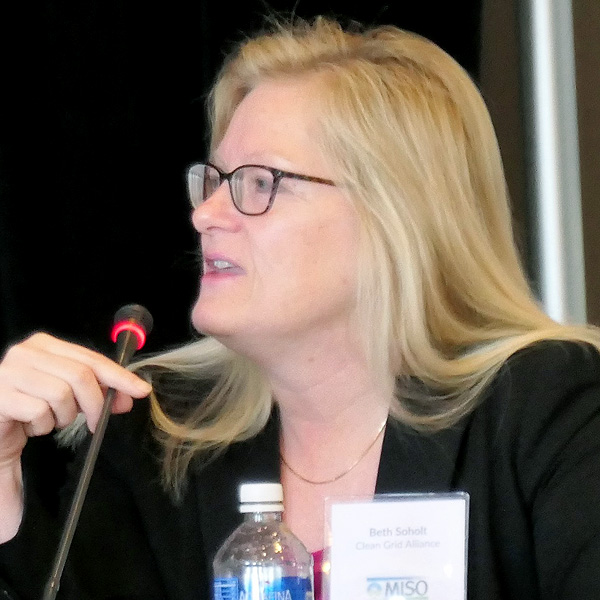New Jersey’s Board of Public Utilities (BPU) has increased its incentive to an 8.9 MW floating solar project in Millburn, which the agency says is the largest in the nation.
But the regulator also said the award does not set a precedent for future projects developed on water, which some analysts see as a growth sector for the solar industry.
The BPU agreed to award an incentive of $115.52/MWh to the project in the agency’s now-closed Transition Incentive program, which floats 16,510 solar panels in a reservoir at the American Water Canoe Brook Water Treatment Plant about 10 miles from Newark. The agency agreed to increase the incentive from the original rate of $91.2/MWh, the program’s general rate for net-metered residential and grid-supply ground-mounted projects.
The award concluded a more than two-year negotiation with the reservoir owner, New Jersey American Water, which argued the project should be eligible for an incentive at the top end of the program’s incentive scale — $152/MWh — because the floating array met the program’s “preferred siting” criteria for projects that harness new and innovative technology.
At its Feb. 17 meeting, the BPU approved an order that acknowledged that water-based solar arrays are a “potentially positive development in renewable energy technology” and use “novel technology.”
However, the order added, the award would not apply to future floating solar projects, in large part because the Transition Incentive program was shut down in July 2021 and replaced with the Successor Solar Incentive (SuSI) Program.
Robert Pohlman, vice president of NJR Clean Energy Ventures (CEV), which now owns the Millburn project and partnered with the developer early on, said the BPU’s decision to increase the incentive above other types of solar initiatives shows the agency’s support for the project and the merits of siting solar panels on water.
The panels typically sit on a floating platform kept in place by cables connected to the bottom of a reservoir, lake or other body of water.
“It’s a beneficial use of property and locations and space that would otherwise not be used to generate renewable energy,” he said. “Any time we can leverage sites like this, we are interested in it.”
Completed in December, the project is fully operational and provides most of the electricity needed to run the treatment plant, he said.
Global Potential
The award comes as the concept of floating solar panels on bodies of water — sometimes called floatovoltaics — got a boost from a new study published in March that concluded that floating solar projects on reservoirs present a “huge potential” for generating clean energy worldwide.
Researchers from Sweden, China, Switzerland, Thailand and the U.S. studied databases of reservoirs worldwide and concluded that more than 114,000 of them could be used, potentially generating 9,434 TWh a year. That could help 6,256 communities become self-sufficient, according to the study, which said the number of floating solar projects is accelerating and could reach 4.8 GW worldwide by 2026. In addition, the presence of the panels reduces evaporation, conserving water, the study said.
“Floating photovoltaic (FPV) systems on reservoirs are advantageous over traditional ground-mounted solar systems in terms of land conservation, efficiency improvement and water loss reduction,” the study concluded.
A 2019 National Renewable Energy Laboratory (NREL) report, which described itself as the first assessment of floating solar potential in the U.S., said that with 24,419 man-made water bodies in the country, floating solar could “produce almost 10% of current national generation.” A side benefit, the report concluded, is that many of the water bodies are in areas where electricity prices are high and land is expensive, making land-based solar development difficult.
New Jersey has four floating solar projects, including the newly approved Canoe Brook project, totaling about 18 MW, according to the BPU. A small, 112 kw project was developed at another reservoir at the American Water Canoe Brook Water Treatment Plant and a 3.3 MW project sits on a sand and gravel pit in Jackson.
The 8.9 MW project in Millburn will be the largest floating solar project in the country, and the state now has “more floating solar capacity than the rest of North America combined,” said BPU spokesperson Peter Peretzman.
“Installing this expanding technology on bodies of water avoids use of agricultural and open land and can be an important component in meeting the state’s clean energy goals,” he said.
Higher Cost, Smaller Footprint
Solar Renewable Energy LLC (SRE), of Mechanicsburg, Pa., the developer of the Millburn floating solar project, also assembled a 4.4 MW array on a retention pond in Sayreville, New Jersey in 2020. The two projects are now owned by CEV, the renewable energy subsidiary of New Jersey Resources (NYSE: NJR).
With more than 12,700 solar panels, the Sayreville project covers about 12 acres of the 71-acre pond, and sells the electricity to the Borough of Sayreville, providing all the energy needed to run the borough water treatment plant, according to a release by CEV.
A letter submitted to the BPU by Douglas Berry, CEO of Solar Renewable Partners, and two other companies involved in the Millburn project, said the Sayreville project showed the “technology and siting advantages [that] floating solar provides versus traditional ground mount system,” and so the similarly designed Millburn project deserved the top incentive of $152/MWh.
The Sayreville project cost 48% more to develop than “traditional” ground-mount systems, the letter said, arguing that floating solar projects in general should be granted the “preferred siting” incentive rate. Other project supporters say the project footprint is “approximately 25% smaller than that of a comparable ground mount array,” representing a more productive use of land, according to the BPU order that set the initial incentive level of the Millburn project at $91.20/MWh and allowed the developer to petition for an increase.
CEV claims that the Millburn project will be the largest floating solar project in the U.S., a description it previously used for the Sayreville project. Whether that is true is difficult to tell; the Solar Energy Industries Association (SEIA) said it doesn’t track floating solar development.
The Millburn project will provide about 95% of the power needed to run the treatment facility. In arguing for the top-end incentive, New Jersey American Water said that putting solar on water preserves open space and farmland “while simultaneously improving the health of the water body by providing shade that reduces evaporation and algae growth,” according to the order.
Pohlman said floating solar projects also improve the efficiency of solar panels.
“The function of the water being close to the panels does have a cooling effect and allows the projects to operate more efficiently,” he said. “The water being there cools the panels down, and they work more efficiently when they’re cooler. If the panels get too hot, they’re not operating at their highest efficiency.”
Asked if the company is looking to acquire any other floating solar projects, Pohlman said he did not want to discuss the company’s pipeline but said their ownership of the two existing projects has been positive and a learning experience.
“We are seeing more opportunities of this type, and you’re starting to see them pop up around the country,” he said. “You are definitely starting to see the industry look at it and take a much harder look than they have in the past. These projects are testaments to that.”

